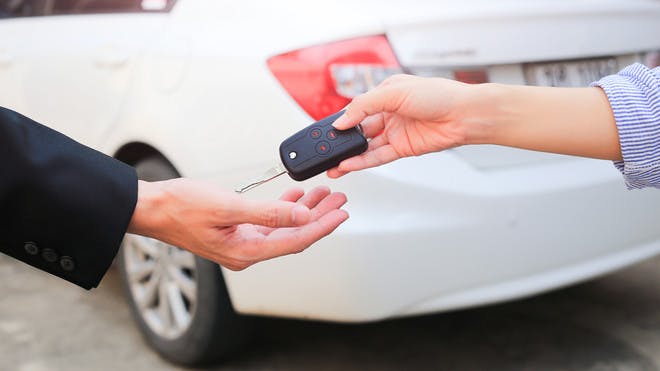What every car buyer needs to know about their new used car
So, you’ve bought your used car. What now?

You’ve done the searching and the haggling and finally, the big day has arrived. You’re about to get your hands on your used car. This is just the beginning, of course. Follow our simple tips to get the most out of your new purchase and get to know your car.
Even if the car is in good working order and there are no issues, it’s a good idea to have it serviced, replacing all the filters and fluids.
Make sure the paperwork is in order
When buying a car, you should have made sure that all the paperwork is in order, particularly the log book (a big piece of paper called a V5C).
The seller will have informed the DVLA and arranged for the vehicle to be registered in your name. They will also give you a green slip of paper.
If they did this online, the DVLA will send you a new log book in three to five days. If the seller informed the DVLA by post, you should receive a new log book in two to four weeks.
You will also have to tax the car. To do this, you’ll need a valid MOT certificate and insurance, so these should be sorted by now too.
To tax the car, use the reference number on the green slip from the log book, then just go online at www.gov.uk/vehicle-tax and pay with a debit or credit card, or set up a direct debit.
For MOT, you can set up a reminder with the DVLA to inform you by text or email a month before the next test is due, at www.gov.uk/mot-reminder which is pretty handy.
Make sure everything is in full working order
We hope you made sure that the car you bought was fully checked out mechanically before you bought it. If you didn’t get an inspection, get one now.
Armed with the inspection report, get any work that needs doing done. Your best bet is to get it done at a dealership for the brand of car you bought. The technicians will be fully trained to work on your car and any spare parts they use will be approved.
It will be a bit more expensive than going to an independent mechanic, but the dealer stamp in the service history might help you get more money for the car if/when you sell it.
Even if the car is in good working order and there are no issues, it’s a good idea to have it serviced, replacing all the filters and fluids. You might also want to replace the brake pads and even the discs, if the car has racked up a few miles and never had them done. The same goes for the cam belt.
There might also be some other minor quick fixes that could optimise the car’s performance – things like new spark plugs, light bulbs, etc.
Take a look at the tyres, too. Check out how good they are at specialist websites such as Tyre Reviews. If they’re not very highly rated, it might be an idea to invest in a set of higher-quality tyres: they won’t be cheap, but it’s a worthwhile investment.
A fresh start
If you bought your car from a dealer, it’s probably been professionally valeted, so it will be spick and span, inside and out.
If you’ve bought privately, though, you should take it for a proper professional clean. There are lots of mobile valeters who will come to your house or place of work to do it.
At the same time, fork out for paint protection and interior fabric/leather products. The good ones (do some research to find them) do offer some protection and will keep your new car in good condition for a year or two.
Get to know your new car
One of the reasons you bought your new car is all the useful features on it. Some of them might be fancy tech for connecting your smartphone. Some of them are features that will keep you and your passengers safe. Whatever they are, now’s a good time to familiarise yourself with them.
Nobody reads the manual, though, right? That’s true, but it's also the reason why a half of British drivers don’t understand the dashboard warning lights – something that could be dangerous as well as costly.
We’re not suggesting that you read it from cover to cover – unless you suffer from insomnia – but make sure that you understand the warning lights, know what safety features are fitted, how to use any handsfree systems for your phone, what the tyre pressures should be, etc.
And then go for a drive. A good, long drive. Take in some country roads, some dual carriageways or motorways, so you get a real feel for the car and what it can do. You’ll also be able to sort out the perfect position for your seat and steering wheel, making minor adjustments to get it just right for you (if you have a memory function, you’ll be able to store it as one of the settings).
You’re now ready to enjoy your car and have many years of happy motoring.
Make searching and staying updated even easier.